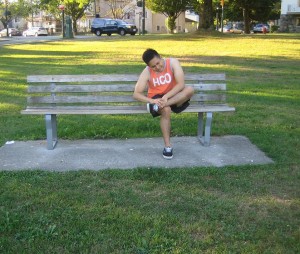Tarsal coalition is described as the abnormal connection of two or more bones in the foot. The bones typically affected are the tarsal bones that are situated at the back part of the foot and in the heel. The connection of the bones can result to a severe, stiff flatfoot.
Even though this condition is often present at birth, children do not show any signs until early adolescence. In most cases, the foot can become sore and stiff and daily activities are often difficult.
Children who have tarsal coalition will experience symptoms that can be relieved with simple treatments such as physical therapy and orthotics. In case a child experiences severe symptoms that do not respond to simple measures and continue to disrupt with daily activities, surgery might be the solution. If you want to learn measures to ease the discomfort, all you have to do is to register for first aid training.
What are the symptoms?

Most cases of tarsal coalitions are not discovered since they do not cause symptoms or any evident foot deformity. Once the symptoms occur, they include the following:
- Rigid and sore feet where the pain typically occurs below the ankle around the middle or back half of the foot.
- Intense pain or a limp when the individual engages in higher levels of activity.
- Stiff, flatfoot that makes it hard to walk even on uneven surfaces. As a way to accommodate to the lack of motion in the foot, the individual might roll the ankle more than usual which results to recurrent ankle sprains.
Diagnosing tarsal coalition
After the doctor discusses the symptoms and general health history, the doctor will perform an examination of the foot and ankle which includes checking the gait and foot flexibility. Those who have tarsal coalition will have a flat arch that does not fully correct when pushing up on the toes and raising the heel.
The imaging tests performed to accurately diagnose the condition include an X-ray and CT scan. In some cases, MRI will be performed to test for irregular bars that form from cartilage or fibrous tissue.
Treatment
It is important to note that tarsal coalition will only require treatment if symptoms are present.
Non-surgical treatment
The individual should take a break from high-impact activities for a given time frame usually 3-6 weeks in order to minimize stress on the tarsal bones and reduce pain. Orthotics such as shoe inserts and arch supports are usually recommended to stabilize the foot and reduce the pain.
The doctor might recommend a temporary cast or boot since these immobilize the foot and reduce stress off the tarsal bones. In some cases, steroid medications can be used along with other non-surgical options to prevent pain relief temporarily.
Surgical treatment
Once the non-surgical treatments are not effective in relieving the pain, the doctor will consider surgery. The surgical procedure that the doctor recommends will depend on the location and size of the coalition and if the joints between the bones shows indications of arthritis.
